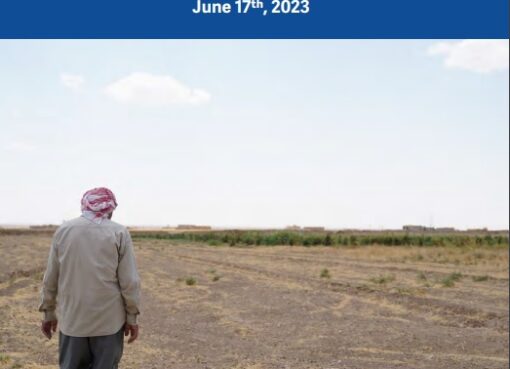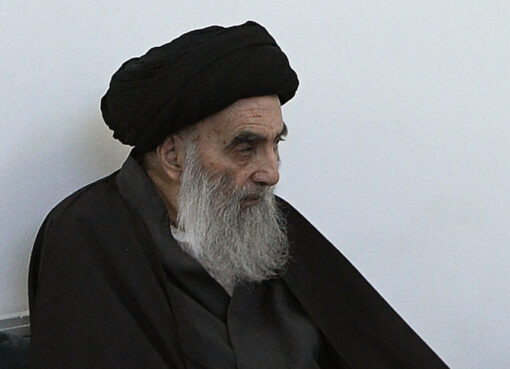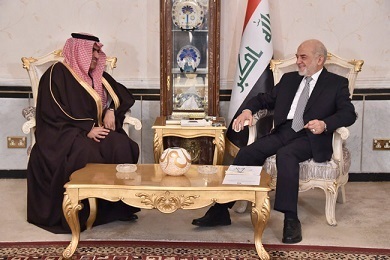Dublin, March 26, 2020 (GLOBE NEWSWIRE) — The “Middle East Macroeconomic Outlook to 2025” report has been added to ResearchAndMarkets.com’s offering.
This report presents economic, demographic, employment, infrastructure and competitiveness data for 14 countries. The research includes 2019 estimates and medium-term forecasts for the period from 2020 to 2024 for select indicators.
- Country Coverage:Bahrain, Egypt, Iran, Iraq, Israel, Jordan, Kuwait, Lebanon, Oman, Qatar, Saudi Arabia, Turkey, United Arab Emirates, and Yemen
- Sector Coverage:Economic indicators, employment, demographics, education, infrastructure, and competitiveness
- Indicator Coverage:Gross domestic product (GDP) and its components, GDP growth, export and import, foreign direct investment (FDI), inflation, exchange rate, value add by sectors, labor force, employment, and unemployment rate, population and demographics, adult and youth literacy rate, crude oil consumption, crude oil import and export, electricity generation and consumption, renewable energy, Global Competitiveness Index, Ease of Doing Business Index, Corruption Perception Index, Bribe Payers Index, political stability, and Human Development Index.
- Year Coverage:2015-2025
The macroeconomic outlook for the Middle East is expected to remain modest in 2020, with the expected strengthening of non-oil sectors and increased infrastructure spending in the region. The oil-dependent economies are prioritizing non-oil sectors for economic diversification. Unemployment across the region is expected to fall and remain stable during the forecast period. Expatriates will remain a major contributor to the regional labor force.
The recessionary pressure is expected to continue on the Iranian economy with no signs of sanction waivers from the United States. An increase in domestic demand and growth in exports should boost the Egyptian economy, while the Saudi Arabian economy is expected to recover from a near-zero growth in 2019 owing to a strong performance by the non-oil private sector. The Qatari economy is anticipated to strengthen with increased infrastructure and construction activities for the 2022 FIFA World Cup. The economic prospects for Yemen, Lebanon, and Iraq remain subdued owing to increasing geopolitical tension, social unrest, and civil war.
Bahrain
The Bahraini economy is estimated to accelerate by up to 2% in 2019 from 1.80% in 2018. It is anticipated to grow by 2.10% in 2020, aided by the $10 billion financial packages from the countries Gulf allies Saudi Arabia, United Arab Emirates (UEA) and Kuwait. The unemployment rate stood at 3.90% in 2019 and is expected to lower to 3.80% during the medium term. Inflation is expected to incline to 2.80% in 2020 from 1.40 in 2019, with the introduction of a 5% value-added tax (VAT) as a part of the Fiscal Balance Program. The trade surplus is expected to decline in 2020 due to crude oil production cuts.
Egypt
With the International Monetary Fund (IMF) backed reform program over 2016-2019, the Egyptian economy has remained strong and accelerated further, from 5.3% in 2018 to 5.5% in 2019. Inflation has dropped to 4-year low and is expected to reduce further. The economy is expected to grow by .9% in 2020, aided by the flourishing tourism and construction sectors. The falling unemployment rate, recorded at 8.1% in 2019, and the hike in the minimum wage by 67% in 2019 are likely to boost domestic consumption. The trade deficit is expected to decline in the coming years as Egypt has become self-reliant on natural gas and has started exporting it.
Iran
The Iranian economy shrunk rapidly due to the reinstatement of US sanctions in 2018. It is likely to enter its third straight year of recession in 2020 (-3.2%) from a negative 4.8% in 2018. As sanctions affect the country’s major revenue source – oil and gas exports, its trade has been adversely affected, declining to $29.5 billion in 2019 from $113.2 billion in 2017. Currency depreciation, fluctuating economic performance, and increasing food prices have led to a rise in inflation from 9.64% in 2017 to 30.4% in 2018. It is expected to hover around 30% if the economy shows positive signs of improvement with infrastructure development. Due to poor political and economic policies, corruption0 and global sanctions, FDI into the country is expected to slow in 2020, while the unemployment rate is projected to reach 21.3% by 2025 from 14.48% in 2018.
Iraq
After 2 years of downturn, Iraq’s GDP is set to grow at 3.4% in 2019 and by 4.7% in 2020. The growth surge is expected to be a result of improved oil production and electricity generation. Post-war reconstruction has started even though it is expected to remain sluggish in 2020. However, with the rise in social security, salaries, and pensions in the 2019 budget, private consumption expenditure in the year is expected to increase and reach 61.8% of GDP. The unemployment rate hovers around 7.5% in 2019 as the nation’s main revenue source – i.e., the oil sector -only employs around 1% of the labor force. Even with the tremendous FDI prospects, the FDI inflow has been negative since 2013 and is expected to remain so in 2020 as well.
Israel
The Israeli economy grew by 3.3% in 2019 on the back of falling unemployment and low-interest rate. However, it is expected to decelerate below 3% in 2020 and 2021 due to the global slowdown and the anticipated fiscal tightening interventions in 2020. Subsequently, lower consumer spending is set to reduce private consumption in 2020. Merchandise exports suffered a big hit in 2019 under the effect of the protests in Hong Kong and the US-China trade war, but the operation of natural gas production from the Leviathan field from the end of 2019 presents the country with more export potential from 2020. The high-tech sector that includes electronics, pharmaceuticals, and others is expected to maintain its strong growth. In addition to existing government grants and privatization, the business climate has remained steady with reduced tax rates. However, uncertainties in the Middle East region are expected to affect investor confidence and weigh down on investments.
Jordan
Jordan’s GDP is expected to increase slightly to 2.5% in 2020 from 2.2% in 2019. The country is likely to experience gradual growth in the upcoming years due to regional conflicts and the refugee crisis. The service sector is likely to be the key driver of the economy. The influx of Syrian refugees has pressured the country’s economy and demography, forcing its working population to migrate to other Gulf nations for employment. The working population in Jordan is expected to increase at an impressive rate in the upcoming years.
Kuwait
Kuwait’s economy is heavily dependent on oil revenues. The oil industry accounts for 40% of the GDP and 95% of exports. GDP is expected to reach $166.1 billion in 2025 from $137.6 billion in 2019. The non-oil sector is also expected to strengthen with the accelerating infrastructure projects. The government’s plan to introduce VAT from 2021 is likely to push up inflation and private consumption expenditure. The unemployment rate is expected to remain stable at 1.3% from 2019 to 2025. With 70% of its population being expatriates, poverty is almost non-existent in Kuwait.
Lebanon
Lebanon’s economy continues to be weak, with the growth rate going below 1% since 2017. The GDP is expected to grow to 0.9% in 2020 from 0.2% in 2019. Ongoing political tensions and protests in the country will have a significant impact on the economy in 2020. The inflation rate, which spiked in 2018 due to higher prices of imported fuel, is likely to slow down with the decrease in fuel prices. The influx of Syrian refugees has affected the demography and economy of Lebanon. Unemployment is likely to rise with the increased competition in the labor market.
Oman
Oman’s GDP growth is expected to decrease to 0.04% in 2019 as a result of the OPEC induced price cuts on oil, the nation’s main revenue source. The country’s vision to diverge away from its oil-dependent GDP has resulted in infrastructure investments into the non-oil sector, which is expected to generate substantial revenue from 2020 onwards, improving GDP growth rate to 2.01% in the year. Under the Omanization policy to provide more opportunities to nationals, Oman introduced a visa ban on expats for 87 specific jobs in 2018, resulting in 25,000 new jobs to Omani citizens. As a result, the unemployment rate has decreased to 3.08% and is expected to reach 2.68% in 2020.
Qatar
Qatar’s GDP is forecast to grow at a steady pace from 1.5% in 2018 and record 3.0% growth by 2025 supported by hydrocarbon and non- hydrocarbon sectors. Further, with the country hosting the 2022 FIFA World Cup, its economy is expected to improve driven by the construction, tourism and transportation sectors. Moreover, with Qatar accounting for the largest share of the global liquefied natural gas (LNG) market, its export reached $86.8 billion in 2018 and is estimated to increase further by 2025. With the introduction of VAT in 2020 and the rise in energy prices, inflation is estimated to be at 2.23% till 2025. Likewise, due to the extremely low unemployment among expatriates (who account for 85% of the total population), the country has almost full employment rate.
Saudi Arabia
The Saudi Arabian economy is estimated to slow down to 0.20% in 2019 from 2.40% in 2018 with lower oil prices and cuts to crude production in 2019. It is expected to grow by 1.20% in 2020 due to strong government expenditure and the strengthening of non-oil sectors. In the medium term, the growth rate is expected to track back to 2.60% with a gradual increase in oil prices. Vision 2030 is expected to boost investor confidence and is likely to increase the participation of private sectors. The trade surplus is expected to decline further, with continued cuts to crude oil production and the expected decline in oil prices in 2020.
Turkey
The Turkish economy is estimated to close 2019 at 0.25% and grow to 2.9% in 2020. To combat the recessionary pressure of 2018, the nation adopted an expansionary fiscal policy and decreased the policy rate from 22.5% in 2018 to 10.5% in 2019, subduing the inflation to 15% in 2019. However, the unemployment rate is estimated at 13.8% as a result of recessionary pressure, further decreasing the private consumption expenditure until 2020. On account of the wage hike in Central Europe, cost-sensitive industries are relocating to Turkey leading to positive growth in FDI inflows into the country. The nation is working to bring both inflation and central bank policy rates to single digits by 2023.
United Arab Emirates
Recovering from the oil price shocks over the 2014-2017 period, UAE is estimated to grow by 1.6% in 2019 supported by non-oil sectors. The GDP is expected to expand by 2.5% in 2020 and 2.7% in 2021, with economic activity strongly driven by Dubai’s World Expo 2020’and Abu Dhabi’s economic stimulus package for the years from 2019 to 2021. Subsequently, the unemployment rate will remain low on the back of elevated employment opportunities. Domestic demand is expected to rise due to the announced salary increments across all sectors in 2020. With the country raising the level of foreign ownership to 100% covering 122 economic activities across 13 sectors in 2018, the foreign investor confidence is likely to remain high. However, the global economic downturn and geopolitical uncertainties in the Middle East are most likely to hinder the full potential of trade and investment in the country.
Yemen
The ongoing civil war that started in 2015 has severely crippled the economy. After negative GDP growth rates from 2015 to 2017, the economy grew by 0.8% and an estimated 1.2% in 2019 due to a marginal recovery in oil exports. Private consumption and trade have plummeted and are estimated to remain low over 2022-2025. The continuous depreciation of the Yemeni Rial, reaching 566 per USD in 2019, has induced high inflation in the country with surging prices of food and basic commodities. Under the threat of famine and lack of water, sanitation and health facilities, poverty has stretched to 76% of the total population and is expected to extend further during 2022-2023. The country is under the worst humanitarian crisis and requires a high level of charitable action. Under the effect of the war, Yemen registered a net divestment of $282 million in 2018. Foreign investment in the country will remain adversely affected by the devastating business climate expected over 2022-2025. However, the country aims to improve the economy through the resumption of hydrocarbon activities with a targeted oil production level in 2020.
For more information about this report visit https://www.researchandmarkets.com/r/iotu5j
Research and Markets also offers Custom Research services providing focused, comprehensive and tailored research.
Source: Yahoo Finance, March 26, 2020








Comment here